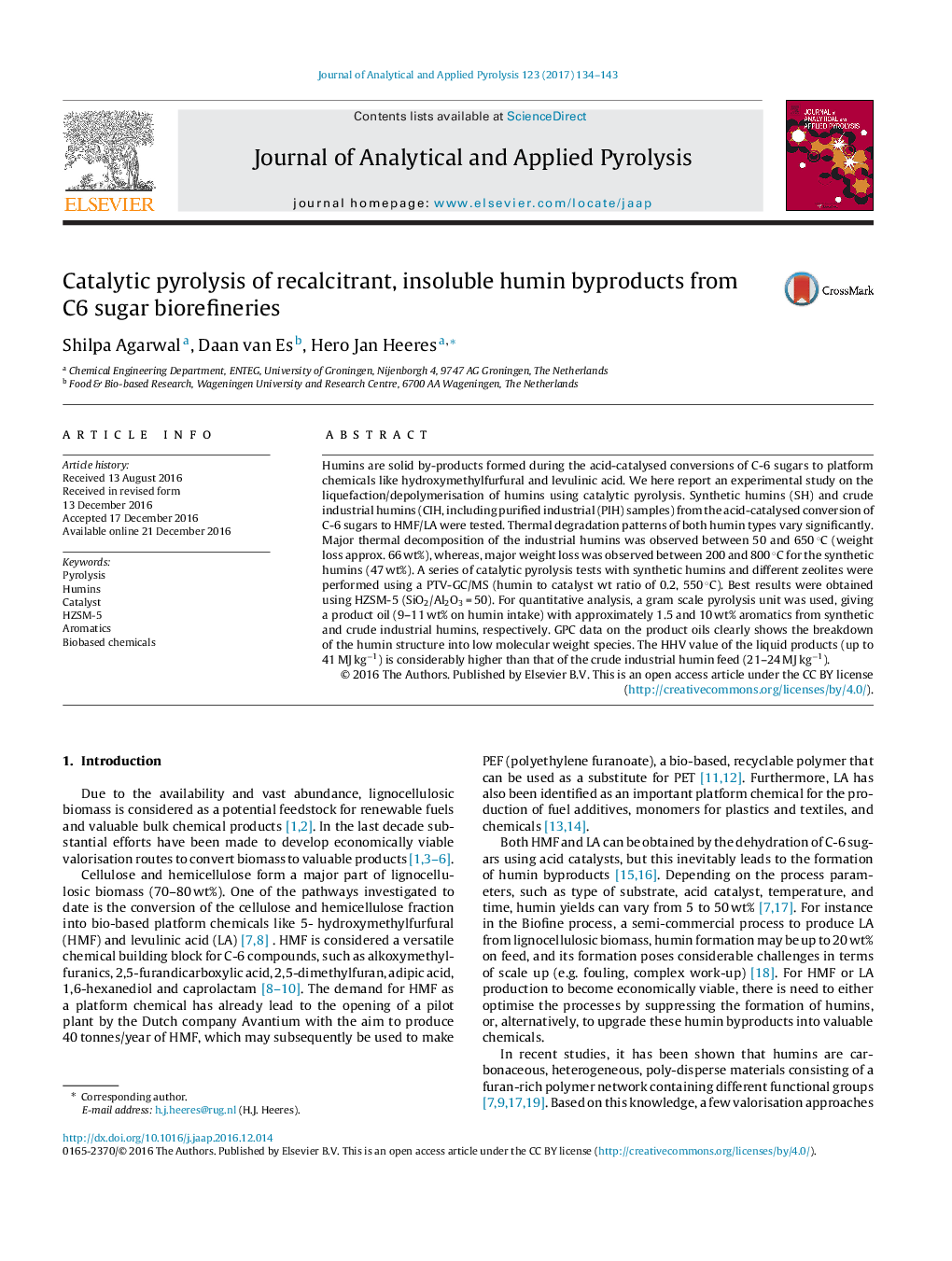| Article ID | Journal | Published Year | Pages | File Type |
|---|---|---|---|---|
| 5134530 | Journal of Analytical and Applied Pyrolysis | 2017 | 10 Pages |
â¢Humin depolymerisation by catalytic pyrolysis is reported.â¢Catalyst sceening studies showed that H-ZSM-5 gives highest aromatic yield.â¢Total aromatics yield can be as high as 10 wt% on humin.
Humins are solid by-products formed during the acid-catalysed conversions of C-6 sugars to platform chemicals like hydroxymethylfurfural and levulinic acid. We here report an experimental study on the liquefaction/depolymerisation of humins using catalytic pyrolysis. Synthetic humins (SH) and crude industrial humins (CIH, including purified industrial (PIH) samples) from the acid-catalysed conversion of C-6 sugars to HMF/LA were tested. Thermal degradation patterns of both humin types vary significantly. Major thermal decomposition of the industrial humins was observed between 50 and 650 °C (weight loss approx. 66 wt%), whereas, major weight loss was observed between 200 and 800 °C for the synthetic humins (47 wt%). A series of catalytic pyrolysis tests with synthetic humins and different zeolites were performed using a PTV-GC/MS (humin to catalyst wt ratio of 0.2, 550 °C). Best results were obtained using HZSM-5 (SiO2/Al2O3 = 50). For quantitative analysis, a gram scale pyrolysis unit was used, giving a product oil (9-11 wt% on humin intake) with approximately 1.5 and 10 wt% aromatics from synthetic and crude industrial humins, respectively. GPC data on the product oils clearly shows the breakdown of the humin structure into low molecular weight species. The HHV value of the liquid products (up to 41 MJ kgâ1) is considerably higher than that of the crude industrial humin feed (21-24 MJ kgâ1).
